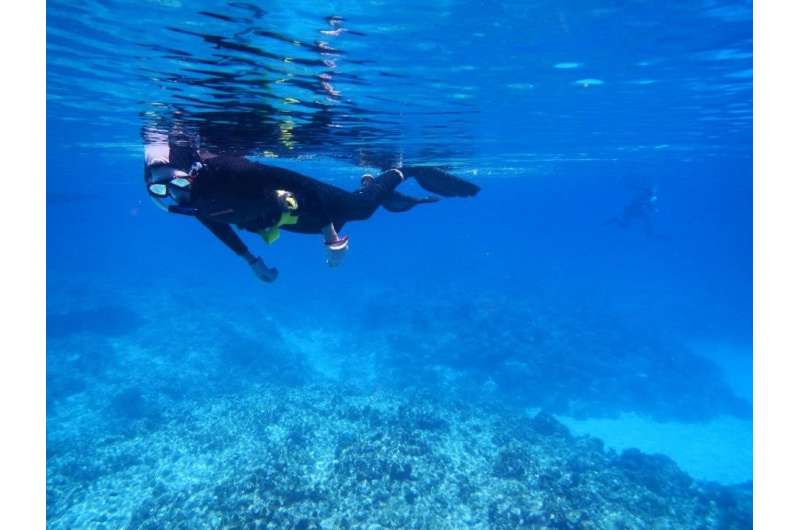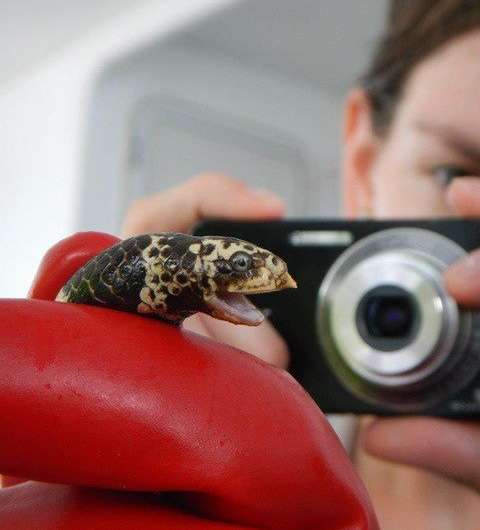Jenna Crowe-Riddell conducting fieldwork at Hibernia Reef off the coast of Western Australia. Credit: Chris Malam
Sight, touch and spatial memory are key ways sea snakes find their mates, says an Adelaide researcher.
On field trips to Hibernia Reef off the coast of Western Australia Jenna Crowe-Riddell, and colleagues from the University of Adelaide, filmed a male turtle-headed sea snake (Emydocephalus annulatus) courting a female underwater.
"We're interested in how sea snakes can find each other in such a vast environment like the ocean, where many sensory cues, such as smell and vision, are distorted," says Jenna.
Sea snakes are native inhabitants of Australian tropical waters and most, although not the turtle-headed sea snake, have a deadly venomous bite.
"A male turtle-headed sea snake has a specialised spine at the tip of his snout which he uses to probe the female along her back," says Jenna.
"We think this spine is used as tactile feedback for the male so that he can keep up with the female as she swims."
However after watching a few minutes of sea snake courting, Jenna noticed something unusual.
"The male completely lost contact of the female and was unable to find her again, despite her being within one metre of him at one point," she says.
Jenna photographing a male turtle-headed sea snake at Hibernia Reef. The spine on the tip of its snout is clearly visible. Credit: Chris Malam
This made the researchers wonder: how does the male recognise and keep track of females?
"We noticed that the male used a combination of senses: he followed her movement while she swam (visual), probed her with the tip of his snout (tactile) and revisited sites of previous courtship (spatial memory)," says Jenna.
Jenna hopes her underwater observations can be used to better understand what motivates sea snake behaviour, which she says is vital for understanding the evolution of these remarkable Australian reptiles and ensuring their future conservation.
Provided by Freshscience





















